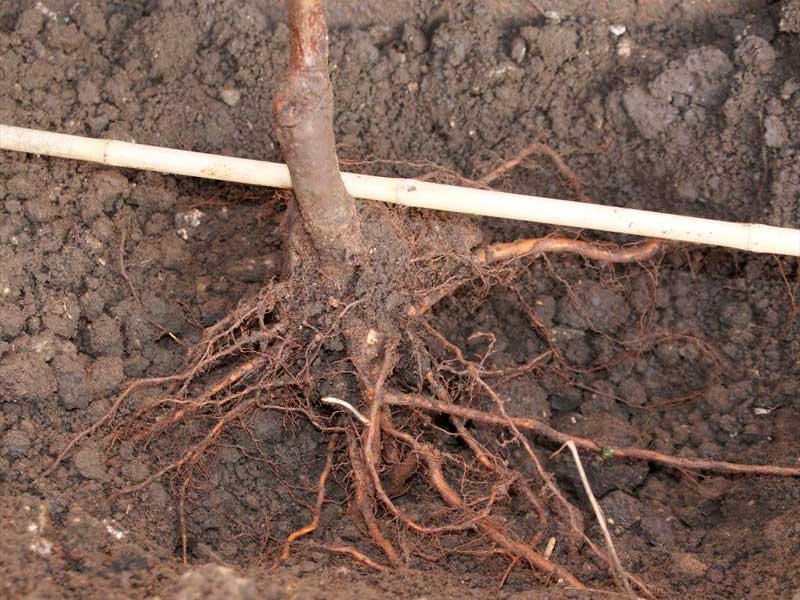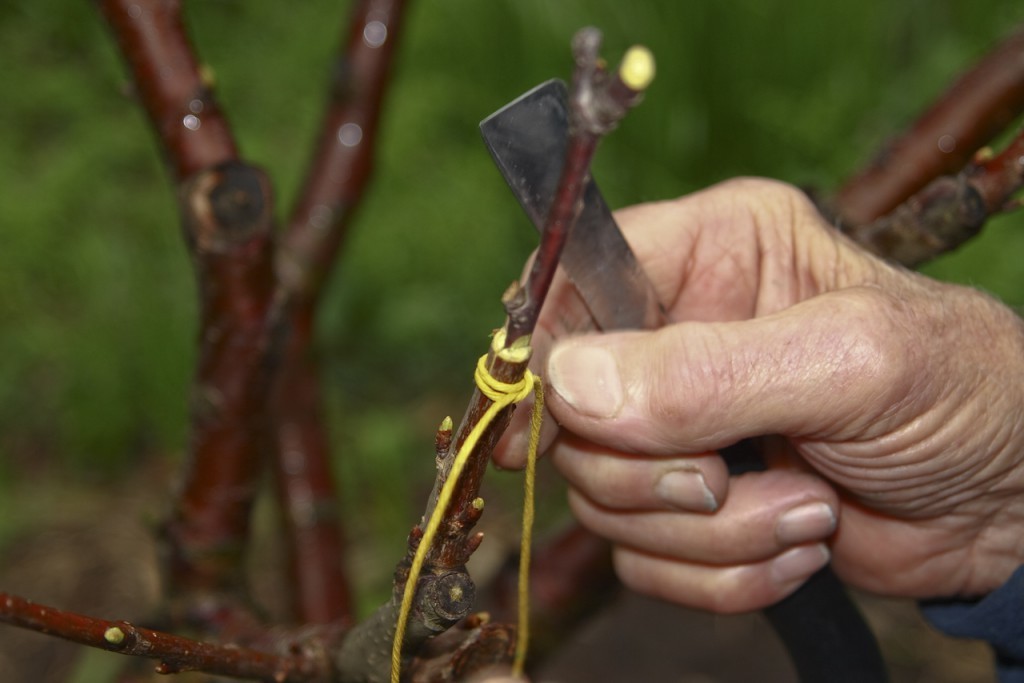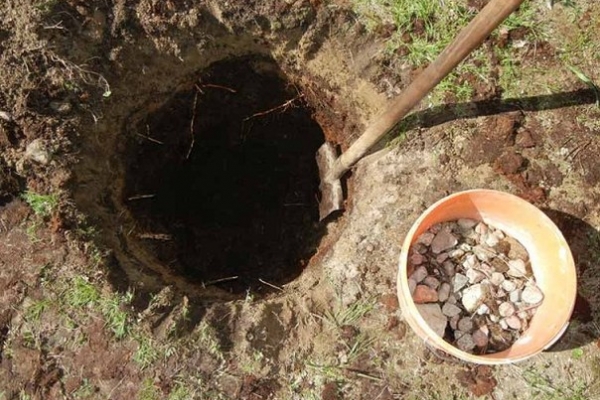Recommendations on how to plant plums in spring
Content
Timing
The first thing to know when growing a plum is the timing of its planting. Getting the right time to land is half the battle. It is necessary to plant a plum in the spring. And this should be done early. At the same time, you can plant a seedling in the fall. This is done approximately 1.5-2 months before the soil freezes.
Also, the time when you can and should plant a tree is determined by the climatic conditions of the place of growth. In the middle lane, it is recommended to plant a plum in spring, but autumn is more suitable for the southern regions. Also, small variations in planting timing are possible, based on the type of tree.
But all the same, experienced gardeners consider spring to be the best time to plant plum seedlings. It is in the spring that the survival rate of seedlings is maximum. The best period for planting is considered to be the end of April (the 20th) and before the beginning of May (the first 10 days). When the seedlings are planted in spring, their roots fall into the heated soil. As a result, the aboveground part of the young tree develops normally. In addition, the plum becomes resistant to the conditions of the winter growing season.
Video "Growing plums in the garden"
Planting tips
The most important aspect to consider is the choice of a high-quality and viable seedling. If you choose the right seedling, then the planting will be effective, and in the future you will get a high-quality and plentiful harvest of delicious plums.As you know, you need to plant a plum only with high-quality planting material. A good seedling can be selected based on the following selection criteria:
- the absence of defects and various types of damage on the seedlings;
- lack of broken off branches;
- the presence of a powerful root system. The seedling should have 3-5 strong roots, the size of which should be from 25 cm.
Such seedlings can not only be planted in the spring in a suitable place on your garden plot, but also later transplanted into a new one. When choosing planting material, you should know that plums can be:
- vaccinated;
- rooted. In case of freezing, they can recover on their own.
Also trees can be:
- self-fertile;
- self-fruitless. Such a plum should only be planted in combination with self-fertile trees.
In order to properly plant or transplant a plum, you need to know certain nuances. Tips for planting and caring for a tree include the following:
- plum is a rather demanding tree for moisture, warmth and location. Therefore, the optimal area where you can plant a plum is a place with sufficient access to light and little access to wind. The tree needs full protection from the west and north winds. The best choice would be a site near buildings or a fence;
- the depth of the planting pit should be about 0.5 m, and the width should be more than one meter;
- if the soil is poor in nutrients, then the planting holes should be dug out deepened from 40 to 60 cm and expanded to 100-120 cm. Such dimensions allow creating optimal conditions for soil nutrition of seedlings;
- the best place to plant a plum is in the southwest, southeast or east direction. Do not set aside the southern slopes for landing sites.Otherwise, the plum can get a fairly severe degree of sunburn;
- it is worth avoiding low places in which the tree will grow out, and during flowering, a negative effect of spring frosts is possible;
- in terms of soil selection, it is worth giving preference to loamy soils that have a soil solution close to a neutral reaction. The soil pH should be in the range of 6.8-7.2. Swampy areas with a gley horizon are considered unsuitable for planting. In addition, soils with abundant gravel and gravel are not suitable. Here the plant will suffer from desiccation or excess moisture;
- the dug hole is filled 2/3 with the top layer of soil, which is mixed with fertilizers. About 15 kg of compost, 400 g of wood ash, 300-400 g of superphosphate, 40-60 g of potassium chloride are placed in the pit;
- the seedling should be planted so that the root collar is located about 5 cm higher than the existing ground level. The same condition holds true if the tree needs to be replanted;
- the distance between seedlings is determined based on the type of acquired tree. For spreading and wide drains, this figure is approximately three meters. With a small crown, the distance can be reduced to 1.5 meters;
- so that the young tree grows evenly, the seedling is propped up with a peg from the north side.
If the seedlings were purchased in the fall, they should be dug for the winter in a trench specially dug for this. In it, trees are laid at an angle and sprinkled with earth on top. Young trees need to be covered with earth for about half of the bole. For our country, in most cases, podzolic soils are characteristic. Therefore, in this situation, it is necessary to carry out the liming procedure in order to obtain a strong and healthy tree in the end, as well as a high-quality and tasty harvest.
Correct liming can be done according to the following scheme:
- at a soil pH of 5.2-5.6 - peat soil - 400 g / m², podzolic soil - 450 g / m²;
- at a soil pH of 4.5-5.0 - peat soil - 600 g / m², podzolic soil - 650 g / m².
In addition, before planting, in the presence of loamy and podzolic soils, pre-planting soil fertilization is carried out. The following fertilizers should be applied here:
- humus - most of all (about 15-20 kg);
- superphosphate - much less (no more than 200-400 g);
- potassium chloride - very little (about 40-50 g).
The fertilization scheme is slightly changed in the presence of peaty soils. In this situation, pre-planting fertilization includes the introduction of:
- a small amount of superphosphate (about 300-400 g);
- potassium chloride in small volumes (up to 50 g).
In the presence of edible chernozems, this scheme involves the introduction of:
- humus - 10 kg less;
- superphosphate - about 100-200 g;
- potassium chloride - even less than for loamy and podzolic soils (only 20-30 g).
In this amount, fertilizer should be applied to one pit.
Many gardeners recommend planting with two people. This will allow you to achieve a better planting, since one person will keep the seedling in an even position, and the second will cover it with fertile soil. Taking into account the above tips, you can plant a plum according to all the rules.
Care after
After the plum has been planted, it is important to take proper care of it. The most important thing is to create the necessary water regime. The water regime for plums in the post-planting period looks like this:
- after direct planting under a tree, two buckets of water are poured;
- per season, the planted plant is watered 2-4 times (here they proceed from the existing climatic conditions);
- in hot periods, watering is increased, taking into account the needs of the plant.
After watering, the land around the plant is mulched, sprinkled with peat chips and fertilized. You can also sprinkle fallen leaves on the ground.
Fertilization is also a prerequisite for maintenance. Top dressing scheme:
- first year - fertilization is not recommended;
- subsequent years - add 1 m2 about 20 g of urea;
- during fruiting - by 1 m2 near the trunk circle, you need to add manure / compost (up to 10 kg), a little superphosphate (about 60 g), even less urea (no more than 25 g) and very little potassium chloride (only 20 g). Also, potassium can be replaced with 200 g of wood ash;
- spring feeding - consists of urea;
- autumn feeding - includes potash and phosphorus supplements;
- spring and autumn top dressing - compost and manure.
In addition, after disembarkation, it is necessary to organize the crown pruning procedure by about 1/3. Be sure to cut the lower branches with a greater grip than the upper ones. Leave extensions on the shoot up to 20-30 cm above the upper lateral branch.
As you can see, planting and caring for a plum is not difficult. Here, you just need to follow the recommendations listed above, and everything will work out for you as it should.
Video "How to plant a plum"
It would seem that planting a plum is a very simple and easy process. However, it has its own subtleties and tricks, the observance of which will help you grow a healthy and fertile tree.






